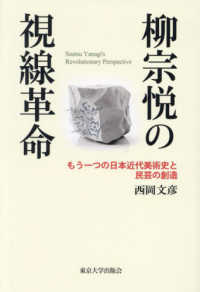- ホーム
- > 洋書
- > ドイツ書
- > Mathematics, Sciences & Technology
- > Biology
- > botanics
Description
(Text)
This study is the most comprehensive and up-to-date overview of style morphology and anatomy of the plant family Asteraceae (or Compositae; asters, daisies, sunflowers), using the most current generalized phylogenetic tree based on molecular data as reference. The Asteraceae are the largest plant family (one out of about every 10 species of the flowering plants belongs to this family); they include about 25,000 currently accepted species in 14 subfamilies and 44 tribes. The authors distinguish 49 style types in the Asteraceae. The style characters are compared with other features that indicate a systematic relationship. The style of an individual flower of the Asteraceae is one of the most important floral organs in two respects: Firstly, the characteristics of the style contribute to the systematics of the family, secondly, the different forms of styles are of utmost importance to secondary pollen presentation. The latter allows for optimizing pollination by pollen portioning, awidespread phenomenon in angiosperms. Combining both morphology and function, the style types represent eight possibilities of secondary pollen presentation, which can be subsumed into four main functional categories. Style characteristics and mechanisms of secondary pollen presentation are plotted in up-to-date phylogenetic trees to illustrate and discuss possible evolutionary trends in the Asteraceae. Evaluating style characters and the position of the style tip within the anther tube shortly before anthesis now allows; in most cases; to easily predict the mechanism of secondary pollen presentation. The different style types are exquisitely illustrated by high quality greyscale and colour images and numerous line drawings. The study is complemented by extensive bibliography, a table of the specimens studied (species, collection, etc.) and an index. This style atlas is useful not only to botanists (especially synantherologists) and entomologists, but addresses a wider audience interested more generally in the systematics of flowering plants and the evolution of floral characters and function.








